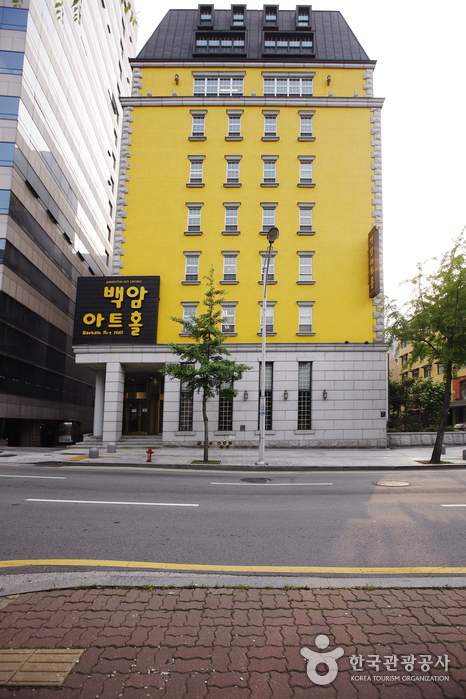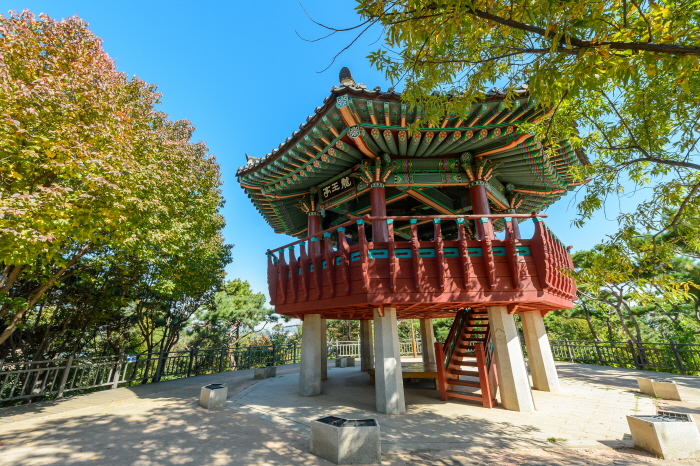Muji - Parnas Mall Branch [Tax Refund Shop] (MUJI 파르나스몰)
17.6Km 2024-04-22
1F, 2F(Cheongdam-dong), 34, Seolleung-ro 152-gil, Gangnam-gu, Seoul
-
Staypeople - Parnas Mall Branch [Tax Refund Shop] (스테이피플 파르나스몰)
17.6Km 2024-04-22
147, Gijanghaean-ro, Gijang-eup, Gijang-gun, Busan
-
Aēsop - Parnas Mall Branch [Tax Refund Shop] (이솝 파르나스몰)
17.6Km 2024-04-22
2F, #91, 147, Gijanghaean-ro, Gijang-eup, Gijang-gun, Busan
-
Africa Eyewear - Parnas Mall Branch [Tax Refund Shop] (아프리카안경 파르나스몰)
17.6Km 2024-04-23
B1F, 521, Teheran-ro, Gangnam-gu, Seoul
-
Allsaints - Parnas Mall Branch [Tax Refund Shop] (올세인츠 파르나스몰)
17.6Km 2024-04-23
38, Haneul-gil, Gangseo-gu, Seoul
-
Olive Young - Parnas Mall Branch [Tax Refund Shop] (올리브영 파르나스몰점)
17.6Km 2024-06-26
B1F, R-3, 521, Teheran-ro, Gangnam-gu, Seoul
-
Baekam Art Hall (백암아트홀)
17.6Km 2019-11-12
7, Teheran-ro 113-gil, Gangnam-gu, Seoul
+82-2-559-1333
Opened in 2004, Baekam Art Hall has 417 seats. Featuring an adaptable stage, it can host various types of performances, including plays, musicals, concerts and dances. Since it is located in Samseong-dong, an area frequented by young people, many performances targeting those in their 20s and 30s are staged there. In addition to the performance hall, it has a luxurious gallery cafeteria decorated in wood.
Yongwangsan Neighborhood Park (용왕산근린공원)
17.6Km 2019-08-29
143, Mokdongjungang-ro, Yangcheon-gu, Seoul
+82-2-2620-3579
Yongwangsan Mountain, also known as Eomjisan, is geologically located at entrance of a land referred to as “Cheonhojibeol,” located across an artificial waterfall. The mountain’s name “Yongwangsan” (meaning Dragon King Mountain) derived from an old tale of a king who dreamt of becoming killed. He then shot an arrow to an old man with spiritual powers living in a village at the foot of Eomjisan Mountain. The king stated “I knew that the old man would someday turn into a dragon and threaten my throne. Therefore I killed the dragon.” The words dragon (“yong”) and king (“wang”) were combined to form its current name, Yongwangsan Mountain.
Lotte Himart - VIC Market Yeongdeungpo Branch [Tax Refund Shop] (롯데하이마트 VIC마켓영등포점)
17.6Km 2024-04-22
125, Yeongjung-ro, Yeongdeungpo-gu, Seoul
-
Noryangjin Fisheries Wholesale Market (노량진수산물도매시장)
17.6Km 2021-01-22
674, Nodeul-ro, Dongjak-gu, Seoul
+82-2-2254-8000
Opened in 1927 on Uiju-ro Street next to Seoul Station, Noryangjin Fishery Market is one of Korea's largest seafood markets. It was moved to the newly constructed building in 1971 in Noryangjin with the Fisheries Cooperative Association taking over the market to promote the fishing industry as well as increase fishing income in 2002. In addition, they started modernizing projects that made Noryangjin Fishery Market a leading fishery market in Korea. The market handles about 50% of metropolitan volume and trades 250 to 300 tons of fishery products every day. The prices of fishery products are decided according to quantity so one is recommended to visit the official website to check the bid. General retail prices are 10 to 20% higher than the auction prices. The market is a mix of wholesale and retail stores and has a lively atmosphere, especially in the early morning from 1 a.m. to 3 a.m., when the live fish auction takes place.
![Muji - Parnas Mall Branch [Tax Refund Shop] (MUJI 파르나스몰)](http://tong.visitkorea.or.kr/cms/resource/83/2879883_image2_1.jpg)
![Staypeople - Parnas Mall Branch [Tax Refund Shop] (스테이피플 파르나스몰)](http://tong.visitkorea.or.kr/cms/resource/87/2879887_image2_1.jpg)
![Aēsop - Parnas Mall Branch [Tax Refund Shop] (이솝 파르나스몰)](http://tong.visitkorea.or.kr/cms/resource/91/2879891_image2_1.jpg)
![Africa Eyewear - Parnas Mall Branch [Tax Refund Shop] (아프리카안경 파르나스몰)](http://tong.visitkorea.or.kr/cms/resource/95/2879895_image2_1.jpg)
![Allsaints - Parnas Mall Branch [Tax Refund Shop] (올세인츠 파르나스몰)](http://tong.visitkorea.or.kr/cms/resource/20/2879920_image2_1.jpg)



 English
English
 한국어
한국어 日本語
日本語 中文(简体)
中文(简体) Deutsch
Deutsch Français
Français Español
Español Русский
Русский